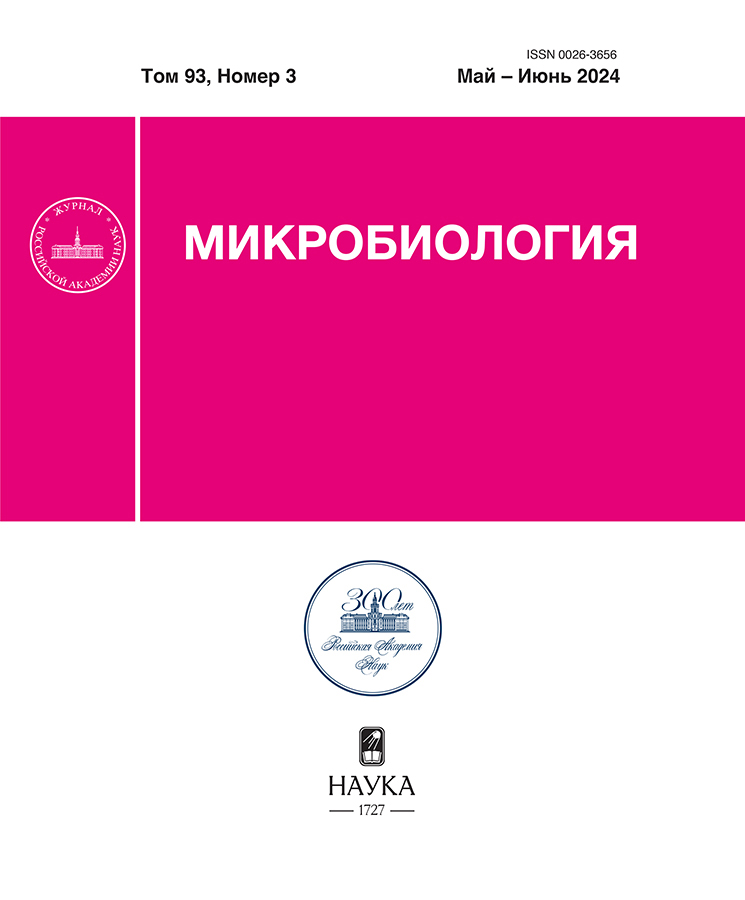Genetic Identification of Microsymbionts of the Legume Hedysarum arcticum B. Fedtsch, Growing on Samoylovsky Island in the Lena River Delta (Arctic Zone of Yakutia)
- Authors: Karlov D.S.1, Guro P.V.1, Kuznetsova I.G.1, Sazanova А.L.1, Alekhina I.A.2, Tikhomirova N.Y.1, Lashchinsky N.N.3, Belimov А.А.1, Safronova V.I.1
-
Affiliations:
- All-Russia Research Institute for Agricultural Microbiology
- Arctic and Antarctic Research Institute
- Central Siberian Botanical Garden, Siberian Branch of the Russian Academy of Sciences
- Issue: Vol 93, No 3 (2024)
- Pages: 368-373
- Section: SHORT COMMUNICATIONS
- URL: https://jdigitaldiagnostics.com/0026-3656/article/view/655110
- DOI: https://doi.org/10.31857/S0026365624030155
- ID: 655110
Cite item
Abstract
Bacterial strains isolated from root nodules of the legume plant Hedysarum arcticum B. Fedtsch growing on Samoylovsky Island in the Lena River delta (Arctic zone of Yakutia) were assigned to the genera Rhizobium (family Rhizobiaceae) and Mesorhizobium (Phyllobacteriaceae) of the order Hyphomicrobiales (class Alphaproteobacteria) according to the rrs gene sequencing data. According to phylogenetic analysis of concatemers of the atpD, dnaK, gyrB, and rpoB genes, the strains belonged to the species Rhizobium giardinii and Mesorhizobium norvegicum. The strains were shown to be facultative psychrotrophs growing at 5 and 28ºC. These microsymbionts are promising for further study of their symbiotic efficiency regarding other forage legume species, with an aim to establish highly productive agrophytocenoses in the Far North.
Full Text
About the authors
D. S. Karlov
All-Russia Research Institute for Agricultural Microbiology
Author for correspondence.
Email: ds.karlov@arriam.ru
Russian Federation, Saint Petersburg
P. V. Guro
All-Russia Research Institute for Agricultural Microbiology
Email: ds.karlov@arriam.ru
Russian Federation, Saint Petersburg
I. G. Kuznetsova
All-Russia Research Institute for Agricultural Microbiology
Email: ds.karlov@arriam.ru
Russian Federation, Saint Petersburg
А. L. Sazanova
All-Russia Research Institute for Agricultural Microbiology
Email: ds.karlov@arriam.ru
Russian Federation, Saint Petersburg
I. A. Alekhina
Arctic and Antarctic Research Institute
Email: ds.karlov@arriam.ru
Russian Federation, Saint Petersburg
N. Yu. Tikhomirova
All-Russia Research Institute for Agricultural Microbiology
Email: ds.karlov@arriam.ru
Russian Federation, Saint Petersburg
N. N. Lashchinsky
Central Siberian Botanical Garden, Siberian Branch of the Russian Academy of Sciences
Email: ds.karlov@arriam.ru
Russian Federation, Novosibirsk
А. А. Belimov
All-Russia Research Institute for Agricultural Microbiology
Email: ds.karlov@arriam.ru
Russian Federation, Saint Petersburg
V. I. Safronova
All-Russia Research Institute for Agricultural Microbiology
Email: ds.karlov@arriam.ru
Russian Federation, Saint Petersburg
References
- Котелина Н. С., Арчегова И. Б., Романов Г. Г., Турубанова Л. П. Особенности природопользования и перспективы природовосстановления на Крайнем Севере России. Екатеринбург: УрО РАН, 1998. 148 с.
- Стратегия развития Арктической зоны Российской Федерации и обеспечения национальной безопасности на период до 2035 года. Утверждена Указом Президента РФ № 645 от 26 октября 2020 г. URL: http://kremlin.ru/acts/news/64274
- Экологические основы управления продуктивностью агрофитоценозов восточноевропейской тундры / Под ред. Арчегова И. Б., Котелина Н. С., Грунина Л.К и др. Л.: Наука, 1991. 152 с.
- Amarger N., Macheret V., Laguerre G. Rhizobium gallicum sp. nov. and Rhizobium giardinii sp. nov., from Phaseolus vulgaris nodules // Int. J. Syst. Bacteriol. 1997. V. 47. P. 996–1006. https://doi.org/10.1099/00207713-47-4-996
- Andrews M., Andrews M. E. Specificity in legume-rhizobia symbiosis // Int. J. Mol. Sci. 2017. V. 18. Art. 705. https://doi.org/10.3390/ijms18040705
- Helene L. C. F., Dall’Agnol R. F., Delamuta J. R. M., Hungria M. Mesorhizobium atlanticum sp. nov., a new nitrogen-fixing species from soils of the Brazilian Atlantic Forest biome // Int. J. Syst. Evol. Microbiol. 2019. V. 69. P. 1800–1806. https://doi.org/10.1099/ijsem.0.003397
- Jarvis B. D.W., Pankhurst C. E., Patel J. J. Rhizobium loti, a new species of legume root nodule bacteria // Int. J. Syst. Evol. Microbiol. 1982. V. 32. P. 378–380. https://doi.org/10.1099/00207713-32-3-378
- Kabdullayeva T., Crosbie D. B., Marín M. Mesorhizobium norvegicum sp. nov., a rhizobium isolated from a Lotus corniculatus root nodule in Norway // Int. J. Syst. Evol. Microbiol. 2020. V. 70. P. 388–396. https://doi.org/10.1099/ijsem.0.003769
- Kumar S., Stecher G., Li M., Knyaz C., Tamura K. MEGA X: Molecular Evolutionary Genetics Analysis across computing platforms // Mol. Biol. Evol. 2018. V. 35. P. 1547–1549. https://doi.org/10.1093/molbev/msy096
- Martens M., Delaere M., Coopman R., De Vos P., Gillis M., Willems A. Multilocus sequence analysis of Ensifer and related taxa // Int. J. Syst. Evol. Microbiol. 2007. V. 57. P. 489–503. https://doi.org/10.1099/ijs.0.64344-0
- Novikova N., Safronova V. Transconjugants of Agrobacterium radiobacter harbouring sym genes of Rhizobium galegae can form an effective symbiosis with Medicago sativa // FEMS Microbiol. Lett. 1992. V. 93. P. 261–268. https://doi.org/10.1111/j.1574-6968.1992.tb05107.x
- Safronova V. I., Kuznetsova I. G., Sazanova A. L. et al. Microvirga ossetica sp. nov., a species of rhizobia isolated from root nodules of the legume species Vicia alpestris Steven // Int. J. Syst. Evol. Microbiol. 2017. V. 67. P. 94–100. https://doi.org/10.1099/ijsem.0.001577
- Weir B. S., Turner S. J., Silvester W. D., Park D.-C., Young J. M. Mesorhizobium strains and Rhizobium leguminosarum nodulate native legume genera of New Zealand, while introduced legume weeds asre nodulated by Bradyrhizobium species // Appl. Environ. Microbiol. 2004. V. 70. P. 5980–5987. https://doi.org/10.1128/AEM.70.10.5980-5987.2004
- Zhao C. T., Wang E. T., Chen W. F., Chen W. X. Diverse genomic species and evidences of symbiotic gene lateral transfer detected among the rhizobia associated with Astragalus species grown in the temperate regions of China // FEMS Microbiol. Lett. 2008. V. 286. P. 263–273. https://doi.org/10.1111/j.1574-6968.2008.01282.x
Supplementary files














